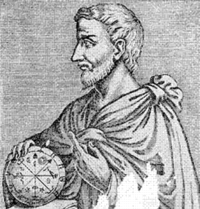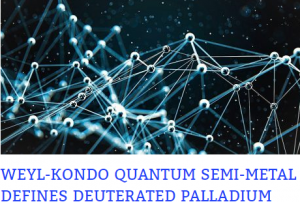
Music Was Einstein’s Physics Muse And May Be Yours Too
Albert Einstein was certain that music provided the bridge that joined together his thoughts on the physics of the universe.
It is inherent in the nature of musical sound that it enables quantum consciousness that is the essence of creative thought just as chaotic sound destroys rational thought.
We now know through scientific study that which all of nature has demonstrated throughout the ages.
In the ecology of quantum materials, a state that from time to time appears as sentient thought, that it is the slowness of the music playing that empowers remarkable connections and enlightenment.

“It occurred to me by intuition, and music was the driving force behind that intuition. My discovery was the result of musical perception.”
There can be little doubt that Einstein had a gift for being able to reside in our physical universe but live in the quantum universe. His insights on our physical universe proved to have incredible utility but his musings on the quantum universe have proven to be truly sublime. In his own words it was music that was his physics muse and through its guiding influence his greatest intuitions became his gift.
From his birth in 1879 to his early life something in his being came to nurture and be nurtured in his extraordinary mind that could come up with such fundamental ideas on the ecology of atoms and physics that those ideas would have to wait until two more decades into the 21st century to be proven correct?
He confessed to thinking about science in terms of images and intuitions, often drawn directly from his experiences with music, only later converting these musings into logic, words and mathematics.
Einstein’s wife told the story of one day he was apparently totally lost in thought. He wandering to the piano and began playing while intermittently jotting down notes. He then disappeared into his study for two weeks (emerging only for the occasional return to the piano. When he finally was finished with his muse he presented his working draft of the theory of general relativity.
It’s now nearly two decades into the third century of his life and in new physics discoveries the characteristics of the ecology of the atom are revealing that they dance first and foremost in their normal condition to slow music, the tune that sets the pace and nature of atoms and their intricate dance is sound that is ever so slow. It is in the slow and gentile motion of the atoms in their true quantum ecology that sets the stage for the emergence of evolving change., slow fusion it seems is what makes this universe dance. Einstein and countless before him, artists and observors of Nature knew this intuitively.
A favourite example from another great physicist involves music. Musical metaphor has played a crucial role as muse in the physical sciences from the time of Pythagoras. Musical theory was a crucial, though publicly dismissed, component in Isaac Newton’s understanding of light. He intuited an analogy between the colour spectrum and the musical scale. The seven notes of the scale are analogous to the colours of the rainbow – red, orange, yellow, green, blue and violet, plus the strange indigo which made the number up to seven.

There is a legend that Pythagoras could hear the ‘music of the spheres’ enabling him to discover that consonant musical intervals can be expressed in simple ratios of small integers. The tones correlated with the great celestial movements of the day. Pythagoras’ concepts were transferred by Plato and others into models about the structure of the universe.
‘More significantly, Newton interpreted Pythagoras’s views on musical consonance as containing the essence of the inverse square law of gravitation, his dazzling solution to the unity of celestial and terrestrial dynamics. Newton drew on Pythagoras and reinterpreted the notion of the harmony of the spheres.’
Slow Fusion In Weyl-Kondo Quantum Materials
It may have taken 30 years to explain Cold Fusion, but better late than never and Einstein’s ideas and manner of coming to those ideas offers some guidance.
An international team of physicists has just now “stumbled upon” an entirely new quantum material, which they have called “Weyl-Kondo semi-metal”. In these quirky materials scientists don’t necessarily have the theories to predict the behaviour of such quantum materials, more often they create them experimentally first and measure them to observe their properties hoping the observations of new facts might one day lead to new theories.
Are we heading back to the roots of physics where observation of mysteries comes first and theory only thereafter?
“In theory, theory and practice are the same. In practice, they are not.” widely attributed to either Albert Einstein or Yogi Berra.
In new findings, published in the journal Proceedings of the National Academy of Sciences, a team headed by a woman physicist Prof. Prof. Dr. Silke Bühler-Paschen at the Vienna University of Technology carrying out the ‘practice’ experimental work to develop new quantum materials, and a team at Rice University carrying out theoretical work to explain the observations.
For a few years now this new form of quantum material/matter has been reported as it appears to be buried within our collection of usual materials in its common characteristics, but it carries some secret behaviours that are beautifully mysterious and evocative. It seems that one of the keys to these quantum material is that it likes everything to go nice and slow. Within it are found as common place ‘crazy particles’ not yet fully understood but which are thought to be collections of something like electrons don’t move at the normal speed near that of the speed of light but rather move slower than the speed of sound in these quantum materials. That would be the cadence of a slow waltz to you and I.
There is nothing new in musical metaphors being the key to understanding what is the quantum universe within which we reside.
Might it be that these massive crazy collections of slow dancing ‘quantum electrons’ inside of the ultra-dense semi-metallic deuterium, that is the natural state of deuterium when it is highly loaded into a palladium lattice, is responsible for ‘cold fusion.’ Clearly along all of the internal surfaces in the metal lattice — these crazy particles, mischugenons , as my former science partner Edward Teller referred to them, mimic here-to-fore unidentified primary particles, some hybrid form of lepton in between a neutron and a muon++, might well be in their ideal natural habitat. They would be the perfect facilitator of ‘cold fusion.’
Pioneer Science
A scant few practicing experimentalists and theoretical physicists have dedicated their careers to explaining the workings of such quantum materials. Much of the theoretical work focuses on the collective behavior that emerges in electronic materials undergoing transformation from one quantum state to another. It is near such points of transformation, or “quantum critical points,” that phenomena like high-temperature superconductivity and associated cold fusion effects are observed to occur.
These ‘quantum materials’ share some of the characteristics of topological insulators, a type of quantum material that gained international attention following the awarding of the 2016 Nobel Prize in Physics. Topological materials have only been defined in insulators, and electricity would flow only on the materials’ surface and not through the bulk. The topological conductors, however, carry electricity in the bulk, thanks to the Weyl fermions or Mischugenons.
There is much to read on this blog along these lines…
